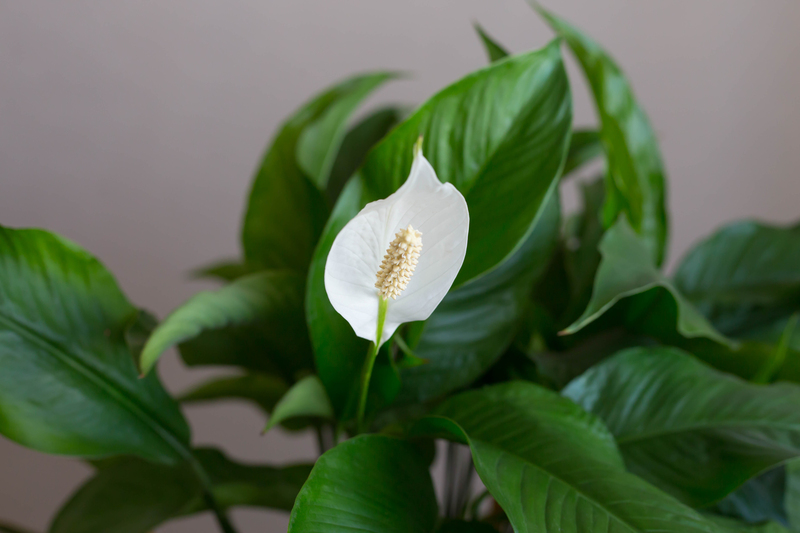Safeguard Garden Plants from Harsh Winter Winds
Posted on 29/08/2025
Comprehensive Guide: Safeguard Garden Plants from Harsh Winter Winds
Winter can be a challenging season for passionate gardeners. While frost and snow pose obvious threats, harsh winter winds are often an underestimated danger that can cause severe damage to delicate and even hardy plants alike. Learning how to shield your garden from relentless cold gusts is crucial for maintaining healthy and thriving plants throughout the dormant months.

Why Are Winter Winds So Harmful to Garden Plants?
Understanding the risks associated with winter weather conditions is the first step to protect garden plants from winter winds. Here are the main ways that wintry gusts can damage your beloved greenery:
- Moisture Loss: Cold winds sap vital moisture from leaves and soil, resulting in desiccation. This is commonly known as winter burn.
- Physical Damage: Gusts can snap branches, stem, or even uproot smaller plants.
- Temperature Fluctuations: Wind chill causes abrupt temperature changes, stressing plants and making them more vulnerable to diseases and pests.
- Soil Erosion: Persistent winds can strip away topsoil, exposing roots and reducing nutrient availability.
Recognizing Vulnerable Plants
Certain plants are more susceptible to winter wind damage. It's important to take extra precautions to protect your garden from winter winds if you have:
- Broadleaf evergreens (e.g., rhododendrons, hollies, boxwoods)
- Young trees and newly transplanted shrubs
- Delicate perennials and flowering shrubs
- Potted or container plants
- Plants in exposed, open areas
Best Practices to Safeguard Garden Plants from Harsh Winter Winds
There are several effective strategies you can implement to safeguard plants from harsh winter wind. These methods, when properly applied, ensure your garden survives winter and bursts back to life in the spring.
1. Install Windbreaks
Windbreaks are barriers designed to slow wind speeds and create a protective microclimate for your plants. They can be natural or artificial:
- Living Windbreaks: Use dense plantings such as coniferous trees (spruce, pine, cedar) or tall grasses planted on the north and west sides, where cold winds are most prevalent. Over time, these grow into effective shields.
- Fences and Screens: Erect temporary burlap, canvas, or even snow fencing for instant protection. Make sure the barrier is set up on the windward side and anchored securely to withstand gusty conditions.
- Garden Structures: Utilize garden sheds, trellises, or walls as physical barriers to safeguard shrubs from winter winds.
2. Mulching Techniques for Winter Wind Protection
A thick layer of mulch dramatically reduces the damage caused by winter wind exposure:
- Apply Organic Mulch: Use straw, shredded leaves, pine needles, or bark mulch around the base of bushes and perennials. This acts as insulation, retains soil moisture, and protects roots from freezing and thawing cycles linked to wind chill.
- Extend Mulch Zone: Extend the mulch out to the dripline of the plant to shelter vulnerable surface roots.
3. Wrapping and Covering Plants
Physically wrapping sensitive plants is a proven method to protect garden plants during winter wind events:
- Burlap Wraps: Loosely wrap shrubs or small trees in burlap, leaving some space for air circulation. Secure the wrapping with twine or landscape ties.
- Frost Cloths or Plant Jackets: Specially designed fabric covers (available at garden centers) provide insulation from wind and cold without smothering the plant.
- Cloche or Mini Greenhouse: For smaller perennials or seedlings, use clear plastic cloches or DIY bottle covers to provide wind and frost protection.
4. Strategic Watering Before and During Winter
Many gardeners don't realize that adequate soil moisture is essential for plants to endure winter winds:
- Water Thoroughly Before First Freeze: Hydrate your plants well in late autumn, especially evergreens. Moist soil retains heat better and reduces dehydration caused by wind.
- Monitor Moisture Levels: During mild winter spells, check soil wetness. Water on warmer days as necessary to combat wind-driven drying.
5. Choose Wind-Resistant Plant Varieties
If you live in an exposed site, plan ahead by incorporating plants that naturally withstand winter wind:
- Dwarf or Compact Varieties: Smaller shapes adapt better to wind stress and are less likely to break or uproot.
- Flexible Stems: Look for species with pliable, resilient branches, such as junipers, dogwood, or bamboo.
- Thick, Waxy, or Hairy Leaves: These morphological traits reduce moisture loss due to wind.
Special Care for Specific Plant Types
Safeguarding Evergreens from Winter Winds
Evergreen plants retain foliage year-round, making them acutely vulnerable to wind-related desiccation. Here are targeted tips to safeguard evergreens from winter wind:
- Group Plantings: Position evergreens in groups to create their own shelterbelt.
- Anti-desiccant Sprays: Apply a safe, horticultural anti-desiccant to coat leaves and reduce moisture loss (always follow label directions).
- Provide Shade: On bright days, combine wind protection with shade cloth to prevent sunscald and excessive evaporation.
Protecting Container Plants from Wind
Potted and containerized plants are especially prone to drying out in windy, wintry weather. To shield container plants from harsh winds:
- Cluster Pots Together: Group pots against a south-facing wall or fence to block prevailing winds and harness reflected warmth.
- Use Wind Barriers: Arrange burlap screens or plant windbreaks around container groupings.
- Move Indoors: Where practical, bring delicate potted plants inside unheated garages, sheds, or porches when severe wind is forecast.
Timing Matters: When and How to Prepare for Winter Winds
The success of your efforts to safeguard garden plants from winter winds hinges on timing and consistency:
- Early Action: Erect windbreaks and apply mulch before the ground freezes or the first storm hits.
- Regular Inspections: Check windbreaks after heavy winds and storms, reinforcing as needed.
- Late Winter & Early Spring: Gradually remove covers to avoid overheating and allow plants to acclimate as temperatures warm.

FAQs: Protecting Garden Plants from Harsh Winter Winds
How can I tell if my plants are suffering from wind damage?
Common signs include brown, curled, or scorched leaf edges, brittle branches, drooping, and in severe cases, splitting stems or total dieback. Evergreens may show discolored needles, while deciduous plants could have stunted buds or bark cracks.
My garden is in a windy, open area. What's the best long-term solution?
Planting living windbreaks--such as rows of dense, fast-growing evergreens--offers sustainable, year-round protection. In the short term, use temporary screens and wrap your most vulnerable plants each winter.
Do all plants need to be wrapped or covered?
No, only your most vulnerable plants--such as new additions, evergreens, or tender perennials--require extra covering. Hardy, established species often require just mulch and a good windbreak.
Can fertilizers help plants cope with winter winds?
Avoid high-nitrogen fertilizers in late season; these encourage tender new growth that is susceptible to wind and frost. Instead, focus on potassium-rich feeds that toughen plant tissue earlier in the year.
Conclusion: Ensure Your Garden's Survival Through the Winter
Facing winter is an inevitable challenge for gardens everywhere, but with thoughtful planning and preventative action, you can safeguard your garden plants from harsh winter winds. Start by assessing your garden's unique exposures, reinforcing vulnerable spots, investing in appropriate windbreaks, and caring for moisture levels from fall through spring. By taking these measures, you'll not only protect your current plants but foster a stronger, more resilient garden for future growing seasons.
Invest in your garden's future--start winter wind protection today and enjoy the rewards when spring arrives!
- Review your landscape for areas exposed to prevailing winds
- Prioritize vulnerable and valuable plants for protection
- Implement windbreaks, wrap, and mulch before winter hits
- Stay vigilant--inspect and repair damage promptly to minimize risks throughout the season
By following these expert recommendations, you're certain to enjoy a lush and healthy landscape, even after the harshest of winter winds!



